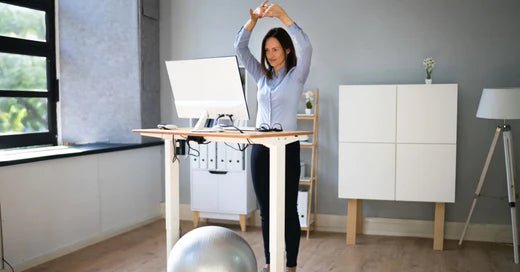
Sit-stand desks: Driving workplace wellness pan India
Today, the idea of work spaces has moved beyond the conventional office landscape comprised of cubicles, desks, and chairs. The work space design in Bengaluru, Mumbai, Chennai, Gurgaon, and Pune has crafted a functional role for itself which is a break point from its limited structural role in the past. Owing to their sedentary lifestyle, growing work pressures, and lack of harmony between personal and professional lives, among other reasons, the health of corporate India has taken a dive over the last decade. While 43 percent of them have skewed BMI, one out of every two employees in big cities suffering from stress. Diabetes, hypertension, and other lifestyle-related disorders are common among employees in the workplace sector today. As such, it has become vital for organizations to recognize the need for creating a ‘well being-focused workplace’. The productivity of the employees has a direct impact on an organization’s bottom line.
Ways in which the corporate sector can become a better place:
Encourage exercise and movement
Everyone wants to stave off illness and ensure a healthy mind and body than getting employees up and active. Incorporating on-site fitness centers, sports teams, marathons, or guided yoga classes can be a great way to inculcate wellness culture at a workplace. Going a long way to getting the employees moving, low-cost solutions like sit-stand desks, walking meetings, or ‘desk exercises’ are the need of the hour in the cities mentioned above.

This is great for startups which need office furniture that can expand and grow with them. As an office design concept, it is being embraced on all levels- as the materials which are being used are of high quality and giving comfort to all levels in the hierarchy.
Driving workplace wellness through sit-stand desks
The simplest non-exercise activity intervention you can do for yourself is to stand up if you’re one of the millions of knowledge workers who spend the majority of their working day sitting behind a computer. Engaging in a combination of postures, as is possible with a sit-stand workstation, has many benefits:
- Strengthens leg, ankle and foot muscles
- Improves balance
- Mitigates formation of blood clots deep in the legs
- Squeezes valves in the leg veins, pushing blood upward toward the heart
- Reduces the risk of cardiovascular disease
- Improves alertness
- Encourages movement
- Discourages “mindless” snacking
- Allows deep breathing
- Increases good HDL cholesterol levels
- Decreases bad LDL cholesterol levels
- Promotes weight loss
- Is better for the back
- Is a natural posture for human
- Is less fatiguing
The fundamental notion behind a sit-stand workstation is that it engages all human physiological systems, integrating mechanical, physical and biochemical functions for optimum health. In and of itself, sitting, or indeed any static posture has a limiting effect on both the electrical and chemical methods used for communication between systems. When these systems operate in balance to maintain stability, there is homeostasis. Not many are aware that sitting disease reflects a disturbance of homeostasis, a condition known as homeostatic imbalance.

Being adjustable to each employee, each meeting and each industry, mobile standing desks create flexible working areas whether it is Mumbai, Chennai, Pune, Gurgaon or Bengaluru. Their simple design makes them easy to assemble and compact, so they’re easy to store. Better yet, they’re often low cost and make a minimal impact on your company’s budget.
Throughout the entire office environment, mobile standing desks and individual sit-stand workstations support a culture of movement in India. On the contrary, a traditional meeting room that offers no choice can never be successful to change the sedentary behaviors. Even if enough chairs are present, adding mobile standing desks, gets people thinking about their choices and reflects a movement-friendly office culture in the cities where there is a reach of this product.
